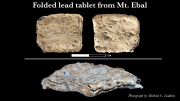In 1879, some twenty years after the publication of his famous Origin of Species, Charles Darwin wrote a letter to botanist Dr Joseph Hooker.
One sentence in particular underscored a vexing problem for evolutionary theory: “The rapid development as far as we can judge of all the higher plants within recent geological times is an abominable mystery.”1
By ‘higher plants’ Darwin had in mind the plants he viewed as being the most ‘highly evolved’, i.e. the Angiosperms—plants with flowers (with seeds produced inside the female reproductive organ). As BBC Science put it, “The famous naturalist was haunted by the question of how the first flowering plants evolved.”2
Although many evolutionary scientists since then have tried to address this issue that “haunted” Darwin, the problem remains. “One hundred and forty years later, the mystery’s still unsolved,” acknowledged University of London evolutionary biologist, Professor Richard Buggs. “Of course, we’ve made lots of progress in our understanding of evolution and in our knowledge of the fossil record, but this mystery is still there.”
So, flowers are still an evolutionary mystery, in spite of the vastly increased knowledge of the fossil record.
Professor Buggs says of the fossil record leap from gymnosperms (e.g. firs, spruce, pine trees): “Why can’t we see intermediate forms between the gymnosperms—things like conifers—and the flowering plants?”
Buggs refers to “our knowledge of the fossil record” but this has to be selective knowledge. Evolutionists have to ignore or try to explain away various ‘out-of-place’ angiosperm fossils from beneath their supposed first appearance in Cretaceous rocks. For example, fossil “pollen of the Compositae” (the daisy family), which is found all the way down in the Precambrian, presumed by evolutionists to encompass the time that life first evolved.,3,4 This would mean flowering plants preceded the allegedly ‘more primitive’ plants, such as algae, mosses, ferns, and pine trees. Little wonder evolutionary theorists are ‘allergic’ to Precambrian pollen!,5,6
Flowers from the beginning
The Bible actually places the origin of all plants—algae, mosses, ferns, pine trees, and the flowering plants—on Day 3 of Creation Week; not billions of years ago, but only about 6,000. And from the Bible we can conclude the ‘fossil record’ does not display the order of evolution over long time periods, but rather the order of burial during and since the global Flood of Noah’s day, about 4,500 years ago.
So, for those who despite the evidence and the Bible’s eyewitness account want to cling doggedly to evolutionary ideas, Darwin’s “abominable mystery” remains. For Bible-believing Christians, however, there is no mystery.
References and notes
- Cambridge University, Darwin Correspondence Project: Letter to J.D. Hooker 22 Jul 1879, darwinproject.ac.uk. Return to text.
- Briggs, H., New light shed on Charles Darwin’s ‘abominable mystery’, bbc.com, 23 Jan 2021. (Unless otherwise indicated, quotes and other information in our article come from this source.) Return to text.





